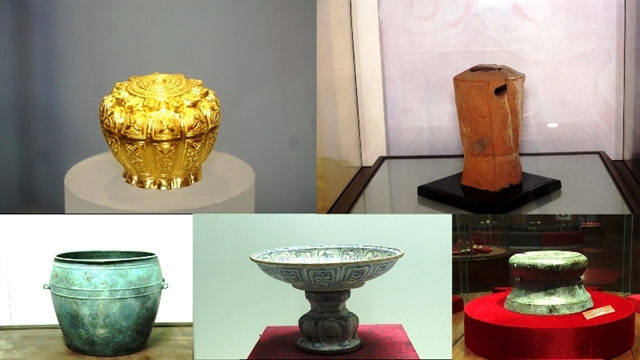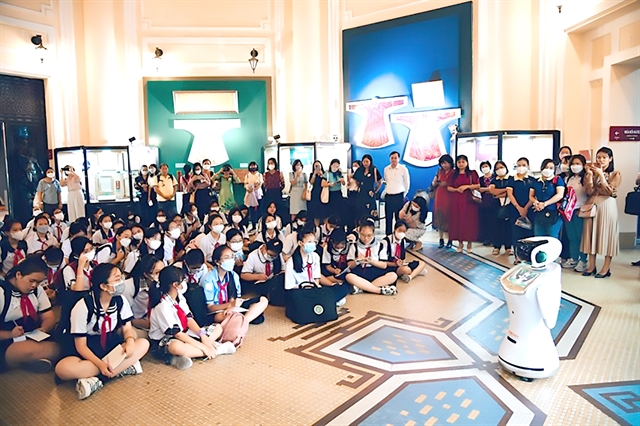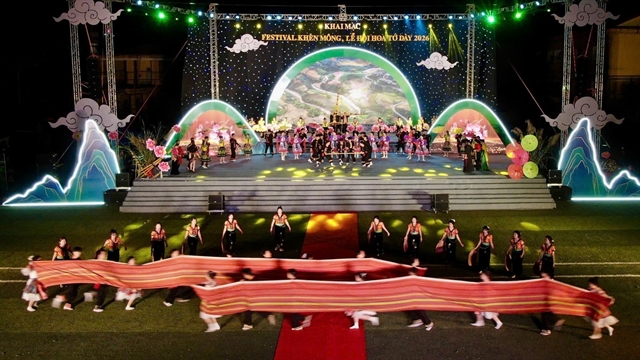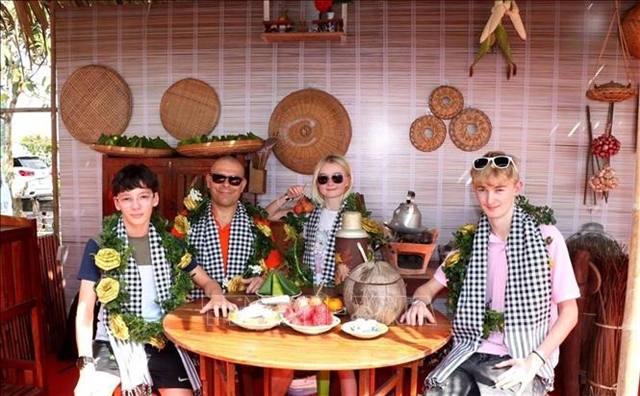 Sunday/Weekend
Sunday/Weekend

 |
| SUPPORTING THE ARTS: HCM City’s local authorities in co-operation with the city’s Cultural Heritage Association have worked to help private museums upgrade and improve their businesses. Photo courtesy of HCM City Cultural Heritage Association |
HCM CITY — HCM City’s cultural authorities are working to support private museums as part of their efforts to build a museum system to boost local tourism.
The city has six private museums and each offers a unique theme.
They include the Wax Museum of Vietnamese Artists, known informally as Madame Tussauds Việt Nam, featuring more than 100 life-size wax models of Vietnamese artists working in theatre, film, and music. Another is FITO Museum of Vietnamese Traditional Medicine, a 600sq.m museum of 18 rooms, which displays more than 3,000 objects used by herbalists in traditional Vietnamese medicine dating back to the Stone Age, including equipment and materials.
Private museums have changed their way of doing business and are attracting more local and foreign visitors.
“The city should focus on supporting private museums and creating long-term policies on key factors such as land funds and taxes,” said Huỳnh Ngọc Vân, director of the private Áo Dài Museum in District 9.
Vân’s museum opened in 2014 to share the history of áo dài (traditional long dress) with foreign visitors and future local generations and increase their awareness of traditional fashion.
The museum displays 500 áo dài designs dating back to the 17th and 18th centuries and their subsequent evolution.
It displays áo dài owned by theatre icons such as People’s Artists Kim Cương and Bạch Tuyết, considered gurus of cải lương (reformed opera).
Others include garments owned by national heroine Nguyễn Thị Định, the first woman major general in the Viet Nam People's Army, and former deputy president Nguyễn Thị Bình.
After ten years, the museum has organized many áo dài fashion shows and photo and painting exhibitions capturing Vietnamese culture and lifestyles.
It attracted more than 44,000 visitors last year.
 |
| LIVING HISTORY: The Áo Dài Museum in District 9, one of the city’s private museums, opened in 2014 to share the history of áo dài (traditional long dress) with foreign visitors and future local generations and increase their awareness of traditional fashion. Many exhibitions, showcases, and fashion shows featuring Việt Nam’s culture in different periods are offered. Photo courtesy of Áo Dài Museum |
“Our activities aim to introduce Vietnamese culture and lifestyle and promote the images of Vietnamese women,” said Vân, adding that her staff has worked to focus on the value and benefits their museum brings to the development of the society much more than profits.
The city’s museums have attracted more than 3 million visitors in the first ten months of 2023, double the amount compared to the same period of last year, reported the city’s Department of Culture and Information.
The number of foreign visitors was around 250,000.
Museums organised 105 exhibitions and showcases, and many online displays featuring the country’s history and culture in different periods.
Last year, the Quang San Art Museum - the first private art museum – opened in Thủ Đức City.
It displays more than 1,000 works of Vietnamese fine arts in many periods of the country, which have been collected by Nguyễn Thiều Quang and his family over many years.
“Private museums are gradually becoming attractive tourist sites where education and research intersect to shape the collective knowledge of the community, spanning everything from art and history to science and technology,” said Lê Tú Cẩm, chairwoman of the city’s Cultural Heritage Association.
Cẩm promises her association in co-operation with partners will work closer with local authorities to help private museums upgrade and improve their businesses.— VNS




